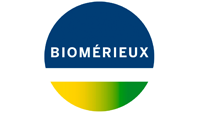bioMérieux launches VITEK® 2 Compact to complete its VITEK 2 range
06 Januar, 2005A world leader in the field of in vitro diagnostics, bioMérieux SA (Euronext: FR0010096479 – BIM) completes its VITEK® 2 range of automated microbial identification and susceptibility testing systems through the launch of VITEK 2 Compact. VITEK 2 Compact is powered by the Advanced Expert System (AES™) software, which validates and interprets susceptibility test results, and detects antibiotic resistance mechanisms.
bioMérieux launches VITEK® 2 Compact to complete its VITEK 2 range
Marcy l’Etoile, France - January 6, 2005. A world leader in the field of in vitro diagnostics, bioMérieux SA (Euronext: FR0010096479 – BIM) completes its VITEK® 2 range of automated microbial identification and susceptibility testing systems through the launch of VITEK 2 Compact. VITEK 2 Compact is powered by the Advanced Expert System (AES™) software, which validates and interprets susceptibility test results, and detects antibiotic resistance mechanisms.
“The VITEK 2 range provides timely, relevant information for targeted antibiotic therapy, resulting in improved patient care and lower healthcare expenses” declares Benoit Adelus, Executive Vice-President of bioMérieux.
The newly launched VITEK 2 Compact, a system for identification and antibiotic susceptibility testing (AST), offers the same advantages as VITEK 2 in a more compact format, bringing VITEK 2 technology to all sizes of microbiology laboratories. VITEK 2 Compact is designed for medium to small-sized laboratories which require an automated system that will cover the majority of their routine tests. The existing VITEK 2 60 and 120
(XL) systems are designed for large microbiology laboratories requiring high test throughput.
VITEK 2 Compact and its Expert software, AES™, offer significant benefits for the microbiologist, the clinician and ultimately, the patient. In addition to optimized result reliability, the microbiologist can be confident of detecting even weakly expressed resistance mechanisms. The clinician obtains a rapid, accurate and validated test report, and is alerted in the event of antibiotic resistance. This report helps the clinician to make the correct diagnosis and, when necessary, adapt the antibiotic therapy at the earliest possible stage. The patient benefits from timely treatment with the most relevant antibiotics.
VITEK® 2 Compact is powered by the same Advanced Expert System (AES™) software for the validation and interpretation of susceptibility test results as VITEK 2. This expert software is capable of identifying antibiotic resistance mechanisms, even emerging and low-level resistance. It also contributes to the detection of nosocomial infections, enabling proactive
measures to be implemented.
Furthermore, identification performance has been enhanced on VITEK® 2 systems through the introduction of “Advanced Colorimetric™” technology. An expanded database of over 330 species of microorganisms can be identified using the new VITEK 2 Colorimetric Identification cards. This database covers over 95 % of routine microbiology tests.
VITEK 2 Compact was launched in France in December and will progressively be commercialized in all other countries.
- - -
Antimicrobial Resistance and Nosocomial Infections
Following the widespread availability of newly discovered antibiotics in the 1940s, the number of illnesses and deaths from infectious diseases fell dramatically. However, bacteria have since been able to develop resistance to existing antibiotic treatments. The development of "multi-resistant" bacteria (such as Staphylococcus aureus and Enterococci), which can be resistant to even second or third generation antibiotics, represents an important healthcare challenge.
Antimicrobial resistance often concerns nosocomial infections, which are now a leading cause of death in some countries, with up to 60 % of hospital infections caused by multi-resistant microbes. In the US, it is estimated that 14,000 patients die every year from hospital-acquired antibiotic -resistant bacteria[1]. Antimicrobial resistance also significantly impacts healthcare expenditure, since the treatment of resistant bacteria requires prolonged hospital stays and often patient isolation.
The rise in resistance may be slowed by prevention strategies based on a more careful use of antibiotics and hygiene measures taken at both individual and community level. Various initiatives have been introduced, such as the World Health Organization’s “Global Strategy for Containment of Antimicrobial Resistance” launched in 2001 to limit antimicrobial resistance and ensure surveillance.
[1] WHO Report on Infectious Diseases, 1999

